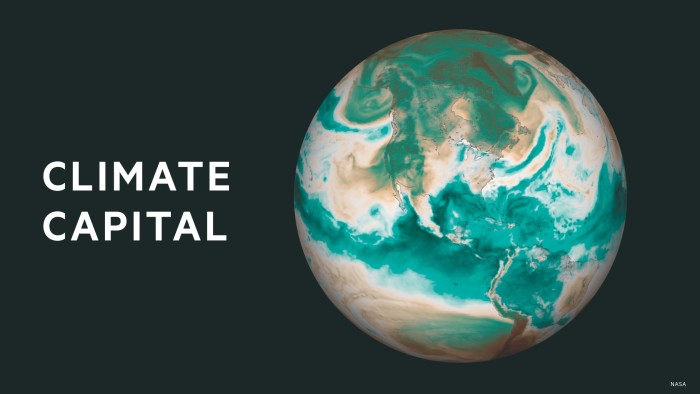How we can all tackle climate change

This article was the winning entry in the 2024 free FT Schools programme student essay competition with Royal Geographical Society on students’ priorities on sustainability.
A UN climate report published in 2022 delivered a stark warning: in mitigating the effects of climate change, it’s ‘now or never’. It is imperative to take action to achieve environmental sustainability.
With major policy announcements under way, action is now needed by individuals — and it must be drastic. Through food, transportation and clothing, they can become part of a growing wave of change which might just about save the planet.
Changing food consumption habits is one of the most effective approaches to contribute to a sustainable future. The UN estimates that up to 14 per cent of all man-made greenhouse gas emissions are the result of meat consumption.
Beef produces an average of 100kg of carbon dioxide equivalents (C02eq) for every kilogramme, with methane, an extremely potent greenhouse gas, making up almost half of these emissions. Reduced meat eating could thus make a substantial difference.
This does not mean cutting out all meat — a simple change such as switching to less carbon intensive meats such as chicken (40CO2eq/Kg) and lamb (10CO2eq/kg) can make a real difference, with the occasional consumption of beef still possible.
Buying local food is another way of making a difference. In general, shipping makes up only a small portion of emissions from food — but this varies. Air freighted foods cause up to 50 times more transport emissions than foods transported by boat, and buying local can make a notable difference. A recent study has shown that ‘food miles’ are more important than previously believed.
Purchasing products labelled ‘Fairtrade’ can be another way to make a difference, as they are bound by improved environmental quality standards.
Finally, reducing food waste is fundamental. In 2023 in the US, 58 per cent of methane emissions from landfill sites were attributed to food waste, according to an EPA study.
Transportation is an important emitter. Using buses and trains rather than private transport can reduce greenhouse gas emissions by up to two-thirds for each passenger. The frequency and efficiency of public transport in developed economies such as the UK makes this a practical way of reducing one’s carbon footprint.
Currently, flying accounts for 2.5 per cent of global carbon emissions, and is likely to increase as average incomes rise. Flights produce water vapour, sulphate aerosol and soot as well as carbon dioxide, generating an overall warming effect responsible for an estimated 4 per cent of global warming.
A study conducted by the Norwegian University of Science and Technology showed that in 2019 the emissions produced by plane travel were 50 per cent higher than projected by the UN. Alternatives such as train travel are more sustainable, often less expensive and sometimes only marginally slower.
Taking local holidays is an alternative which can be just as enjoyable. Higher temperatures and the saturation of tourists will likely lead to the decline of traditional Mediterranean holidays, which could be replaced with more local forms of tourism generating fewer emissions from flying and activities such as car rental.
Clothing and fashion is another area where all individuals have the ability to make a difference. The global fashion industry is responsible for 10 per cent of global carbon emissions, and the average European disposes of 12kg of clothes every year, according to the European Commission.
There are many potential solutions to reduce this impact. Up to 85 per cent of textiles go to landfill each year, contributing to substantial greenhouse gas emissions from landfill sites. Second-hand clothing is an obvious and growing alternative. In the US, the market is predicted to double between 2019 and 2029.
Another solution is simply reducing consumption. According to Leeds University and Arup, buying no more than eight new clothing items a year could reduce fashion emissions by 30 per cent in major global cities.
Renting clothes is one alternative. According to waste charity Wrap, if renting replaced 10 per cent of new purchases each year in the UK, it would reduce emissions by 160,000 tonnes of CO₂. Buying clothes made with recycled materials could also be a positive change.
Changing one’s behaviour to help mitigate the effects of climate change is more fundamental than ever. There are multiple options, but perhaps the most pragmatic and realistic to prioritise are food consumption, transport and clothing. Through small changes, all individuals can contribute to saving the planet.
Santiago Souto is a student at Hastings School, Madrid
Climate Capital

Where climate change meets business, markets and politics. Explore the FT’s coverage here.
Are you curious about the FT’s environmental sustainability commitments? Find out more about our science-based targets here
Comments